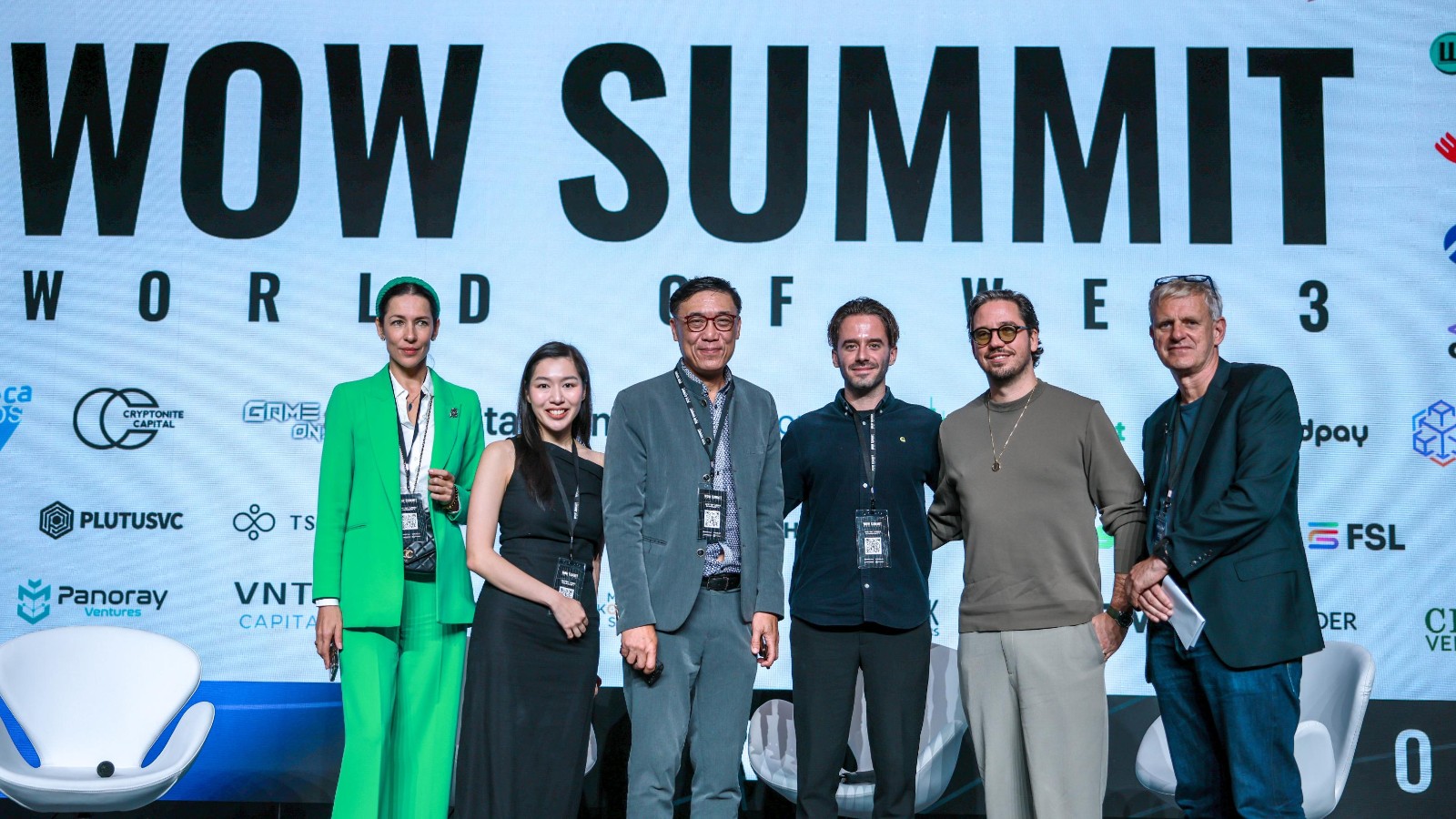2024-03-26
Zhang Tianyuan and Liu Yifan

Tech-savvy gurus and risk-takers in blockchain-based, third-generation internet (Web3) are hailing technological advances in virtual reality and artificial intelligence as key drivers of the digital world. While agreeing that people’s lives are becoming more entwined with virtual spaces, they also hold great expectations for Hong Kong’s role in blurring the border separating the physical and digital realms. At the World of Web3 (WOW) Summit in Hong Kong, Elio D’Anna, co-founder of the UK-based House of Fine Art Gallery and CEO of Kreation.io, said that the days of being tethered to a smartphone may be numbered. Instead, he envisioned a future where human beings will live in a more immersive, three-dimensional reality that seamlessly integrates the digital and physical worlds. “This new reality will be powered by innovative devices that are connected through nonfungible tokens (NFTs) and cloud nodes, enabling users to stream and experience a digital world that is deeply intertwined with the physical one,” he told a panel session co-organized by China Daily titled “Emerging Trends in NFTs and the Metaverse”. Echoing his remarks, Gillian Pua, head of marketing and communications of BreederDAO — a Philippines-based digital assets provider for blockchain-based games — said the sector is waiting for innovations in virtual reality applications to play an increasingly crucial role to shape the world of tomorrow. She said people are witnessing a gradual shift towards a more virtual world, driven by reliance on the internet and social media platforms as well as emerging projects in the metaverse — an immersive digital realm where people can interact via avatars. The creation of innovative hardware is essential in pushing people closer to a seamless virtual experience, she said, citing the example of tech giants like Apple and Samsung, who are striving to create the best hardware that will make the digital playground more lifelike and engaging. During the same discussion, Emil Chan, co-chair of the Hong Kong Digital Finance Association, said Hong Kong has the potential to become a digital asset trading center, serving as a superconnector between the virtual and real worlds. His remarks highlight the city’s unique position and the need for a mature ecosystem to facilitate seamless transactions between digital assets and traditional financial systems. “Hong Kong’s historical role as a trading hub between East and West has positioned the city to leverage its expertise in bridging different markets,” Chan said. “As the world embraces digital assets, such as NFTs and cryptocurrencies, Hong Kong has the opportunity to extend its role as a superconnector to the virtual realm.” Chan noted the importance of creating a system that allows for easy “on-ramping” and “off-ramping” between the virtual and real worlds. This would enable investors to transfer their money into digital assets, creating value in both realms. By developing a mature ecosystem that supports such transactions, Hong Kong could become a center for digital asset trading, serving as a gateway for investors to enter and exit the metaverse, he added. However, to achieve this goal, Chan highlighted the need for stable regulation and the transformation of the traditional financial system. He pointed to the example of the Hong Kong dollar, which has been pegged to the US dollar since 1983, as a model for stability. If a digital currency is issued by renowned banks such as HSBC or Bank of China, it would inject greater confidence among investors, compared to those issued by commercial companies with less transparency, he said. Alexy Joven, co-founder of Modjo, a Paris-based startup specializing in Web3 and Web2 business branding and expansion, shed light on the transformative power of NFTs in the world of marketing. He noted the potential of NFTs to help startups grow without relying on traditional advertising methods, offering a fresh perspective on audience targeting and customer retention. His suggestion challenges the conventional wisdom of casting a wide net to reach a large audience. Instead, he advocates a more targeted strategy, focusing on a smaller group of around 2,000 people. By offering NFTs for free, backed by real value, startups can create a viral effect, generating buzz and attracting a targeted community of users, he said. “You give NFTs for free. … People want it, (and) speak about it. It goes viral, you have … a new community, (receive) better attention and then increase your revenue,” Joven said. Maria Ivina, founder of Satori Me which promotes the synergy of art, ecology, and technology, stressed the importance of synergy between Web3 technologies and sustainable living. Citing the metaverse as an example, she said the virtual space offers opportunities to organize exhibitions, conferences, and gatherings that leverage digital art to draw attention to eco-problems. “I’m very positive about that because I know a lot of people who do care about our planet. And new technologies are a very important part of our life,” she said. WOW Summit Hong Kong 2024, held on March 26 and 27 at AsiaWorld Expo, is a flagship event for the city to raise its profile in the global Web3 community. With over 7,000 attendees, including officials, entrepreneurs, and venture capitalists, the event has served as a sounding board for Web3 players, allowing them to pick each other’s brains on NFT investment, blockchain technology, content creation in the metaverse and virtual asset regulation.